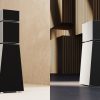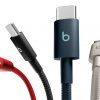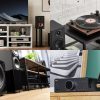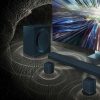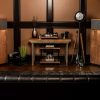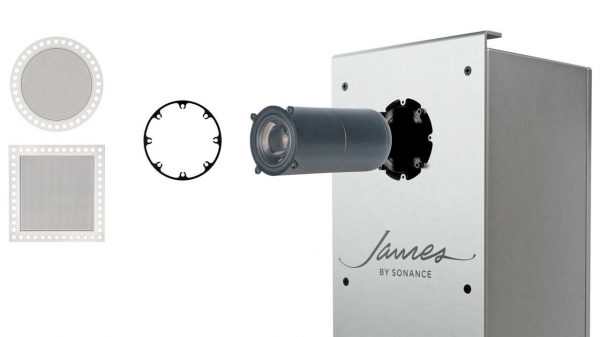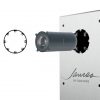Table of contents
Introduction
In-wall and in-ceiling speakers have improved tremendously over the years, and there’s no reason to think you’ll have to sacrifice sound quality just because speakers are installed in the wall or ceiling. In fact, in-ceiling speakers are the best way to enjoy Dolby Atmos height effects! It’s also likely that your favorite speaker maker has a line-up of architectural speakers that are designed and voiced to sonically match their bookshelf and towers, with premium architectural speakers often using the same high-end speaker drivers and technology ported from the company’s freestanding models. However, choosing the best architectural speaker that works for your application generally requires a consultation with a custom integrator unless you can do it yourself. And, don’t forget, you’ll need to get them wired and installed!
I chose the speakers in this list from things I’ve personally installed, reviewed, and heard in multiple demos. As a general rule, I prefer in-ceiling models with larger woofers; they sound fuller and richer and deliver more bass. This is definitely the case with distributed audio throughout a home where a subwoofer won’t be used to augment the low-end performance.
Monitor Audio Creator Series

Monitor Audio recently did a complete revamp on its architectural line-up, and the result is the new Creator Series. The “sweetspot” of this line-up is the Tier 2 speakers, which features the same Rigid Surface Technology II drivers found in the company’s Silver 7G line-up. I always recommend going with an 8-inch driver if possible, as it gives fuller, richer sound, but Monitor redid its speaker design with this series, and now the large speakers feature a 9-inch woofer in the same form factor/cutout as an 8-inch woofer.
If you’ve got the budget – and a room the demands higher performance, step up to the Tier 3 speakers which use drivers and technology ported down from Monitor’s Platinum series. The C3L speakers produced some of the best sound I’ve heard from in-ceiling speakers, with crystalline detail. If you need an in-wall, the rectangular W3M use Monitors MPD II transducer to deliver incredible detail and musicality!
- Tier 1: $375 – $600 at Crutchfield
- Tier 2: $550 – $1,250 at Crutchfield
- Tier 3: $800 – $2,000 at Monitor Audio
Origin Acoustics Director Series

Not only are Origin’s Director Series some of the easiest speakers to install on the market, they also sound fantastic, and have a huge range of offerings ranging from the teeny, 3-inch D39 all the way up to the flagship 10-inch D109 which can produce bass down to 25Hz! I have the D105 speakers in my dining room, and the bass increase from the 10-inch woofer is noticeable, and really brings more depth and range to all music listening, whether at background or concert volumes!
Revel PerformaBe Architectural

Ever since I heard Andrew Jones give a demo of his TAD Reference One loudspeakers at CES, I’ve been a sucker for a beryllium tweeter! I also love the (still expensive but much more affordable!) performance of Revel’s PerformaBe line-up, which feature beryllium tweeters for terrific detail. So, it’s not much of a stretch to say I love the sound of the PerformaBe Architectural series which all feature the same 1-inch beryllium tweeter as found in the company’s PerformaBe line-up. If there’s a room where you demand uncompromised performance but can’t install a free-standing speaker, or need the perfect surround and height speakers to match for your Revel front channels, these will deliver!
- W126Be (2-way 6.5-inch in-wall) $1,750 at Crutchfield
- W226Be (2-way dual 6.5-inch in-wall) $2,250 at Crutchfield
- W228Be (3-way dual 8-inch in-wall) $3,500 at Crutchfield
- C128Be (2-way 8-inch in-ceiling) $1,500 at Crutchfield
JBL Synthesis

JBL speakers are used in more commercial movie theaters than any other brands, and the company’s Synthesis line-up is about the closest thing you can get to having actual movie theater sound in your home! Now, I’m guessing you could use them for distributed audio, but home theater is really where these are meant to roll. JBL offers a variety of models in the Synthesis line, all of which are designed and voiced to be mix-and-matched, letting you use a variety of different products — freestanding, in-wall, in-ceiling — throughout your system and still getting terrific results. One of the hallmarks of the Synthesis design is the use of a compression tweeter mated to a High-Definition Imaging horn, which are capable of delivering huge dynamics and SPL levels. At the CEDIA Expo this past year, the Synthesis system held its own against systems costing more than 10-times the price, proving you don’t need to spend a million bucks to have a system that sounds like it!
- SCL-5 7-inch 2-way In-ceiling ($2,200 each)
- SCL-6 Quad 5.25-inch 2.5-way In-wall ($1,650 each)
- SCL-7 Dual 5.25-inch 2-way In-wall ($1,100 each)
- SCL-8 5.25-inch 2-way In-ceiling ($1,100 each)
Theory Audio Design

One of the things I love about Theory Audio Design is that the company doesn’t beat you over the head with tons of different models, or “good-better-best” propositions. They only make “best.” And when it comes to architectural products, they make exactly two offerings: the iw25 in-wall and the ic6 in-ceiling. All Theory speakers feature compression tweeters, and they can play loud, delivering SPL peaks in excess of 118dB! While reviewing the system, an opening gunshot in Dunkirk literally had me jump and flinch in my seat! However, Theory employs a “system-based” design with its speakers, and using them requires the company’s ALC-1809 which is an Amplified Loudspeaker Controller that handles amplification and DSP processing to ensure you get the most performance out of each model. If you have a room or area that needs a ton of output, Theory Audio Design has you covered.
Triad TS-IC83

This is my company’s go-to architectural speaker for most projects. The speaker is affordable, yet delivers great performance around the house. And, let’s be honest, you aren’t going into your bathroom for “critical listening,” and don’t need to drop a ton of cash to enjoy great sound. Utilizing an 8-inch woven carbon-fiber woofer, this speaker plays down to 42Hz which is plenty for most distributed audio applications. It also employs a pivoting, 1-inch silk dome tweeter that delivers detailed highs that you can direct back into the room. And since Triad is such a custom oriented company, you can order the speaker with either a black or white painted grille, or in any custom color you’d like to specify!
SVS 3000 In-wall Subwoofer

When given my druthers, I would almost always opt for an in-room subwoofer versus an in-wall subwoofer as the price/performance ratio favors a freestanding sub. However, if you have a room/spouse that doesn’t allow you to plop down a giant sub on the floor, then the SVS 3000 In-Wall is one of the best performers I’ve heard. The 3000 In-wall features dual 9-inch high-excursion drivers in an ultra-rigid aluminum cabinet that delivers the kind of massive low-end performance that you’d expect from SVS, rated +/- 3dB at 22 Hz! I’ve installed this on several projects and this sub always delivers. And like most of SVS’ products, the 3000 In-Wall comes at a price that won’t destroy your budget. If you’re going to go with this, spend the extra $1000 and get a dual sub system. This will deliver smoother, deeper bass across more seating positions and deliver a tactile low-end you can feel!
JL Audio Fathom IWS

If there’s an in-wall sub that bests the SVS, it’s the JL Audio Fathom In-Wall. And if you’ve got the budget, and need to use an in-wall sub, this is the way to go. However, a single 13.5-inch Fathom IWSv2 with amp will run you $6,700, and expect to drop nearly eleven large if you want a dual sub system. One of the things that makes the Fathom in-wall so impressive is the unique “floating” mount design that minimizes interactions (ie: vibrations) with the walls, letting the big 13.5-inch driver do its thing. However, due to the requirements of mounting this, you’ll need to do some pretty major wall surgery to get it installed, or plan for it during construction. But, this bad boy delivers true in-room subwoofer performance with a discreet in-wall form factor, and if your install demands the best, look no further.
Related Reading:
- eCoustics Best in Show Awards for CEDIA Expo 2024
- How to Install In-Ceiling Speakers for Dolby Atmos Like a Pro
- Theory Audio Design 5.2.2 Surround Sound System: Review
- Latest Editors’ Choice Awards


